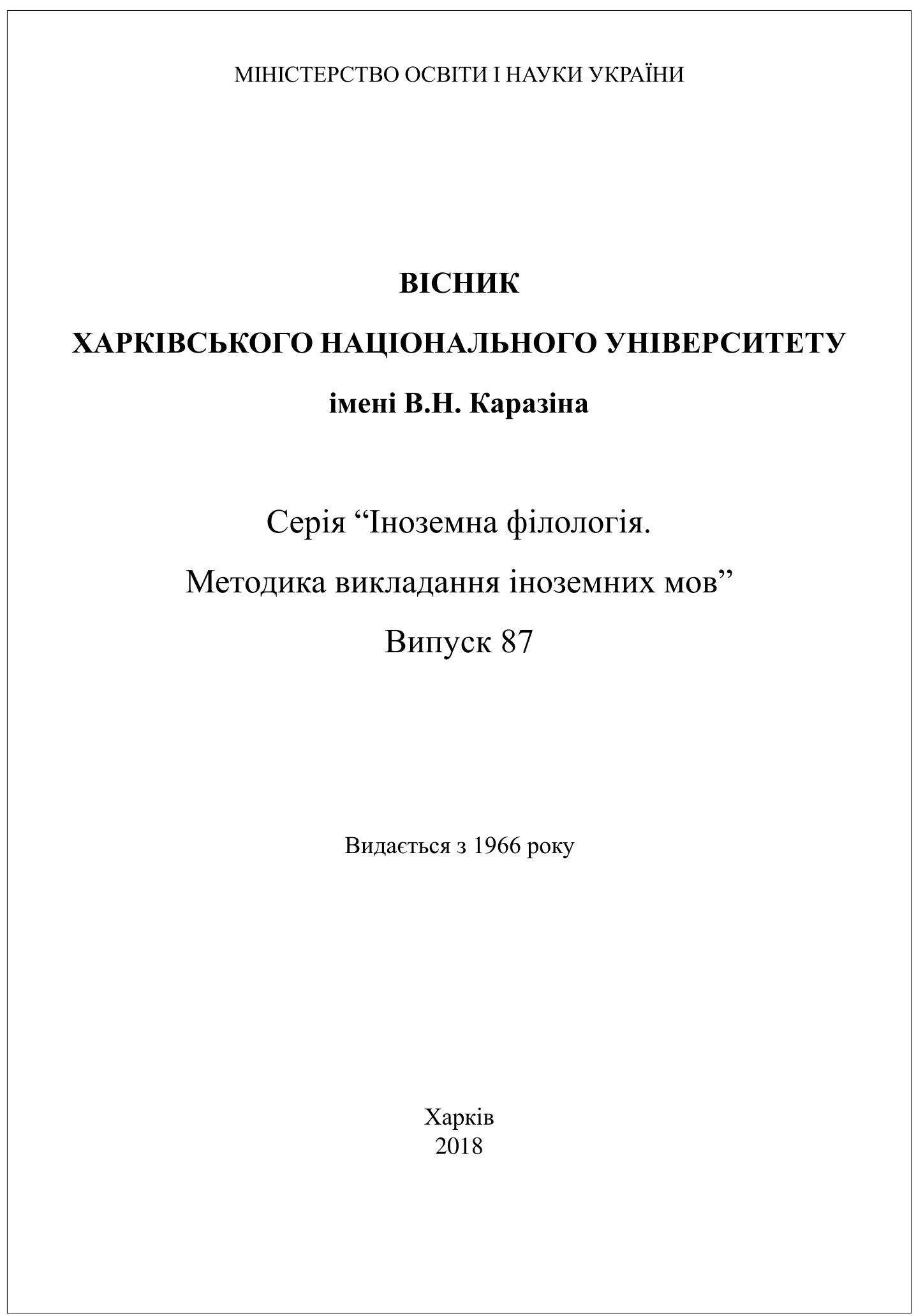Functional and linguosemiotic factors of reproducing artlangs in translation
Abstract
The article is dedicated to determining functional and linguosemiotic characteristics of artlangs as factors of their translation. Artlangs are defined as artificially created languages that function in literary discourse as a means of making fantastic worldview more expressive. Unlike planned languages, whose leading function is communicative, artlangs primarily realize aesthetic function that determines the specifics of their reproduction in translation as a stylistic dominant of such genres as utopia / dystopia, fantasy, and fairytale. Linguocreative function of artlangs also has a direct impact on the formation of the strategies of their reproduction in translation, since perceiving the mechanisms of the author’s linguocreative activity helps the translator act in a similar manner while construing the text of translation. According to linguosemiotic criterion, all artlangs fall into two classes – a posteriori and a priori ones. A posteriori artlangs comprise lexemes whose structural components are borrowed from natural languages. A priori artlangs, in their turn, comprise lexemes that demonstrate no relevance to natural languages. The priority method of translating a posteriori artlangs, whose words possess internal form and, consequently, can undergo morphemic segmentation, is calque (loan translation) which is seen in this paper as a manifestation of domestication strategy. The priority method of translating a priori artlangs whose lexemes possess no internal form is transcoding which is seen in this paper as a manifestation of foreignization strategy. As an example of a posteriori artlangs, G. Orwell’s Newspeak is considered; as an example of a priori artlangs, R. Adams’s Lapine language is considered.
Downloads
References
Adams, R. (1990). Nebezpechni mandry. Kazkova opovid [Dangerous adventures. Fairytale story]. K.: Molod Publ.
Adams, R. Watership Down. (n.d.). Available at: https://e1eee4383fddbcb51 a7e4e68c329268d491a4077.googledrive.com/host/0BxxBedAY-gJnU2xFd05wZnRkQlU/ Watership-Down.pdf78
Finkel', A.M. (2007). O nekotoryh voprosah teorii perevoda [On some issues of translation theory]. In: L.M. Chernovatyi, V.I. Karaban (eds.). O.M. Finkel – zabutyi teoretyk ukrainskoho perekladoznavstva [O.M. Finkel – forgotten theorist of Ukrainian translation studies]. Vinnytsia: Nova Knyha Publ., pp. 227–259.
Komissarov, V.N. (1990). Teorija perevoda (lingvisticheskie aspekty) [Theory of translation (linguistic aspects): textbook for institutes and schools of foreign languages]. Moscow: Vysshaja shkola Publ.
Kuznecov, S.N. (1984). Napravlenija sovremennoj interlingvistiki [Directions of modern Interlinguistics]. Moscow: UDN. Available at: http://miresperanto.com/esperantologio/napravlenija.htm.
Malmkjær, K. (1995). Artificial Languages. In: K. Malmkjær (ed.). The Linguistic Encyclopedia. London, New York: Routledge, pp. 38–42.
Orvell, Dzh. (n.d.). 1984. Available at: http://toloka.to/t45955
Orwell, G. (1987). 1984. New York and Scarborough, Ontario: A Signet Classic.
Shuvalova, O.N. (n.d.). Vymyshlennye jazyki kak predmet «naivnoj» i nauchnoj lingvistiki [Invented languages as a subject of “naïve” and “scientific” worldviews]. Available at: http://www.portal-slovo.ru/philology/47340.php.
Sidorova, M.Ju., and Shuvalova, O.N. (2006). Internet-lingvistika: vymyshlennye jazyki [Internet-Linguistics; invented languages]. Moscow: «1989.ru» Publ.
Sljusareva, N.A. (1990). Funkcii jazyka [Functions of language]. Lingvisticheskij jenciklopedicheskij slovar [Linguistic encyclopedic dictionary]. Moscow: Sovetskaja jenciklopedija Publ, pp. 564–565.
Tolkien, J.R.R., and Tolkien, C. (1983). A Secret Vice. In: The Monsters, the Critics and Other Essays. London: Allen & Unwin, рр. 198–223.
Vitgenshtejn, L. Filosofskie issledovanija [Philosophical research]. Available at: http://www.twirpx.com/file/316233/




